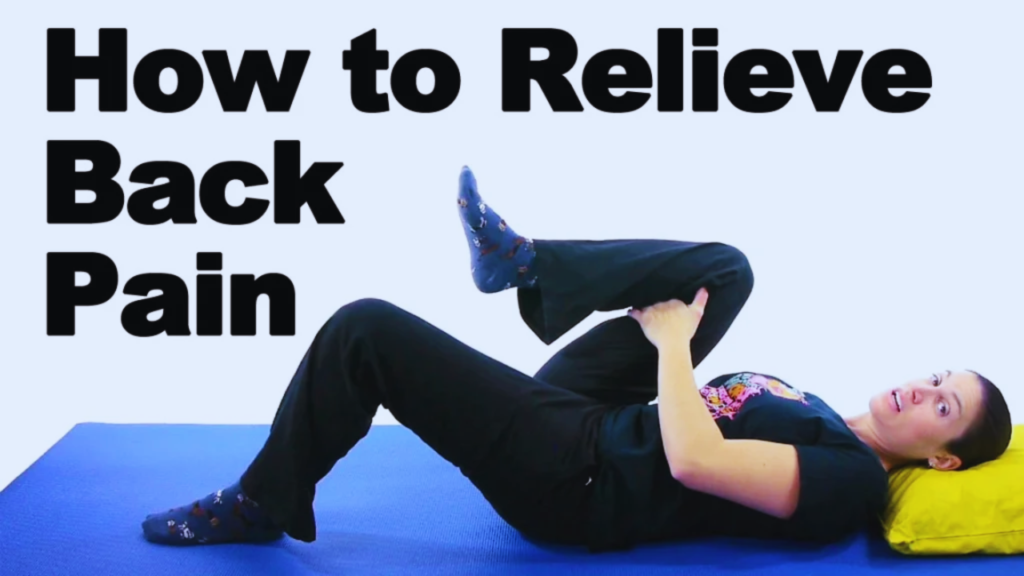
Lower back pain, whether episodic, chronic, or acute, is a widespread issue among adults and is the leading cause of disability worldwide. Weak muscles, particularly in the pelvis and core area, can contribute to injury or back pain. Lower back pain often disrupts your regular activities.
However, research indicates that strengthening exercises can help alleviate low back pain. Exercising with lower back pain is beneficial but should be approached slowly and carefully. Read on to find out 7 exercises for lower back pain that require no equipment, along with information about the reasons for lower back pain.
Best Exercises for Lower Back Pain

The exercises for low back pain listed below are designed to enhance muscle strength and flexibility, providing support for your lower back. Lower back pain can either be a single occurrence or a persistent issue. By incorporating these back-strengthening exercises into your daily routine, you can alleviate discomfort and help prevent future problems by fortifying your back, abdominal, and hip muscles.
You need to pay attention to your body’s signals as you perform these exercises for lower back pain. If you experience pain, stop immediately. Pushing to do exercises through discomfort can worsen your symptoms. If practicing these stretches and exercises on the floor proves too challenging for you, consider trying them on a bed instead. Let’s check out 7 good exercises for lower back pain.
- Knee to Chest Stretch
This stretch offers a simple method to get your body ready for exercise.
1st Step: Start by lying on your backside with your knees flexed and your feet resting flat on the ground.
2nd Step: Gently pull one knee toward your chest using both hands.
3rd Step: Engage your abdominal muscles and press your spine into the ground. Then, hold the position for five seconds.
4th Step: Return to the initial position and switch to the other knee.
You can perform this stretch 2-3 times both in the morning and at night.
- Lower Back Rotational Stretch
Here is another simple stretch to prepare your muscles for exercise.
1st Step: Begin by lying on your backside with both your knees flexed and your feet resting flat on the ground.
2nd Step: With your shoulders anchored to the floor, gently roll your flexed knees to one side and maintain the position for 5-10 seconds.
3rd Step: Go back to the position that you started and repeat the movement on the opposite side.
You can do these repetitions 2-3 times both in the morning and at night.
- Bridges Exercise
The gluteus maximus is the big muscle in your buttocks and ranks among the strongest muscles in your body. It plays a key role in hip movement, especially in actions such as squats that involve hip extension. Weak gluteal muscles can lead to back pain, as they are crucial for stabilizing the lower back and hip joints during activities such as walking.
1st Step: Lie down with the feet flat on the floor, spaced hip-width apart.
2nd Step: Place your hands by your sides and push your feet into the ground as you gradually lift your buttocks until your body forms a straight line. Make sure your shoulders are grounded. Hold this position for 10-15 seconds.
3rd Step: Lower yourself back down.
4th Step: Repeat this movement 15 times.
You need to complete 3 sets of this exercise, resting for 1 minute between each set.
- Partial Abdominal Crunch
The abdominal muscles (abs) are crucial for supporting the spine. Having strong abs can aid in keeping your hips properly aligned. This improves overall stability and core strength.
1st Step: Lie down with your feet flat on the ground and your knees bent.
2nd Step: Cross your arms over the chest.
3rd Step: Inhale a deep breath. As you exhale, engage your abs by drawing your belly button toward your spine.
4th Step: Gently lift your shoulders a few inches off the floor. Keep your neck aligned with your spine rather than rounding it to avoid straining the spine.
5th Step: Return to the position you started.
6th Step: Repeat this exercise 10 times, completing 3 sets in total.
- Cat-Cow Stretch
This stretch is designed to strengthen and relieve tension in your lower back muscles. Performing this workout both in the morning and at night will help relax and loosen your muscles.
Step 1: Position yourself on your knees and hands on the ground, keeping them hip-width and shoulder-width apart.
Step 2: Gently arch your back, drawing your abdomen upward toward the ceiling.
Step 3: Gradually relax your abdomen and back toward the ground, increasing the stretch by pulling the shoulders back and staring up at the ceiling.
Step 4: Go back to the starting position and repeat the movement.
Perform this exercise 3-5 times, twice daily.
- Lying Lateral Leg Raises
The hip abductor muscles are responsible for lifting your leg sideways, away from the body. They also play a crucial role in supporting your pelvis when you stand on one leg. Weakness in these muscles can impact your mobility and balance, and it may raise your risk of experiencing lower back pain.
1st Step: Lie on one side with your lower leg narrowly flexed on the floor.
2nd Step: Engage your core by pulling the belly button toward your spine.
3rd Step: Lift your top leg while keeping the rest of your body still.
4th Step: Hold the position for two seconds at the top, then lower it. Repeat this 10 times.
5th Step: Switch to the other side and repeat. Complete three sets on each side.
- Drawing-in Maneuver
The transverse abdominis is a muscle that encircles the midsection. It provides support to the abdomen and spine. It plays a vital role in stabilizing the spinal joints and helps prevent injuries during movement.
1st Step: Lie down with your feet resting flat on the ground, spaced hip-width apart.
2nd Step: Let your hands rest by your sides.
3rd Step: Inhale deeply, then exhale while drawing your belly button toward your spine.
4th Step: Engage your abs without tilting your hips.
5th Step: Hold this position for 5 seconds.
6th Step: Repeat the exercise 5 times.
Why Lower Back Pain Happens?

While these exercises can alleviate lower back pain, it is crucial to identify the underlying cause. In the U.S., low back pain is among the top reasons people seek medical attention. Some potential causes of lower back pain include:
- Muscle strains
- Poor posture
- Muscle spasms
- Nerve injuries
- Degenerative changes
- Spinal stenosis
- Compression fractures
- Herniated discs
- Cancer
- Arthritis
- Infections
- Spondylolisthesis
- Osteoporosis
- Sacroiliitis
- Kyphoscoliosis
- Neurological disorders
- Tethered spinal cord
Final Words on Exercises for Lower Back Pain

If you are dealing with back pain, it is wise to consult your doctor before beginning any exercise routine. Depending on what’s causing your pain, specific exercises for lower back pain might worsen it. For instance, if you have sciatica, specific movements or stretches could aggravate your condition or pain.
Once the severe pain subsides, you can slowly begin gentle regular exercises to strengthen and stretch the muscles supporting your lower back. Furthermore, try to get up and walk around regularly, as much as possible.
